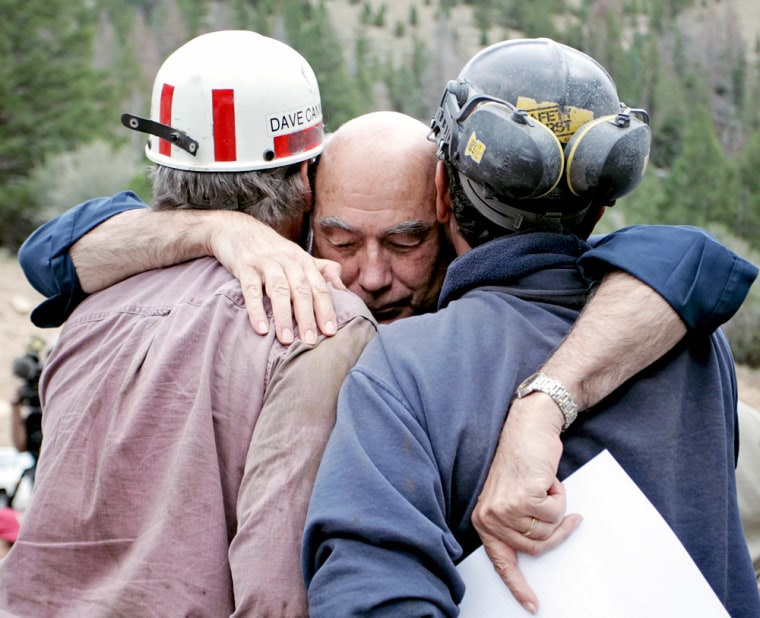The operator of a Utah mine that collapsed, killing six miners and leaving three others dead in a failed rescue attempt, violated safety protocols by cutting coal pillars that should have been left standing to prevent cave-ins, federal regulators said Thursday.
The officials said a subsidiary of Ohio-based Murray Energy Corp. undermined other pillars by excavating coal from tunnel floors. They also faulted the company's engineering firm, Agapito Associates Inc. of Grand Junction, Colo., for conducting a flawed evaluation of mining dangers.
Murray Energy chief Bob Murray has insisted that taking down the pillars, a practice called retreat mining, had nothing to do with the collapse. He argued from the start that it was caused by an earthquake.
Poor engineering blamed
At a news conference Thursday, MSHA chief Richard Stickler disputed that, instead blaming poor engineering.
"First of all, it was not — and I'll repeat not — a natural-occurring earthquake, but in fact it was a catastrophic outburst of the coal pillars that were used to support the ground above the coal seam," Stickler said.
The agency is fining Murray Energy $1.6 million and Agapito $220,000 for the disaster, he said.
The Aug. 6 collapse trapped six miners whose bodies haven't been recovered. Three others were killed during a rescue attempt.
MSHA said Murray Energy misled regulators about the dangers and violated its approved mining plan. The company said it was preparing a response.
Scott Matheson, chairman of Utah Mine Safety Commission, said he had doubts about the federal agency's ability to assess its own performance policing Murray Energy and believes an independent agency should have conducted the investigation.
"I just think as a matter of good government and policy, having some independence would make sense," said Matheson, a former dean of the University of Utah law school and professor there.
Second report due
A second report by the U.S. Department of Labor will take a critical look at MSHA's performance, department spokesman Rich Kulczewski said. That report could be out within days.
MSHA tapped a retired district director, Richard A. Gates of Birmingham, Ala., as chief of the investigative team. Six other members are career MSHA officials.
Their report confirmed congressional investigations that faulted Murray Energy for courting danger at the mine.
Internal company memos revealed that Murray Energy was digging into massive blocks of coal that should have been left standing to hold the mine up, according to a March report issued by Sen. Edward Kennedy's Health, Education, Labor and Pensions Committee.
The same report found that Murray Energy was excavating coal from tunnel floors, undermining other coal pillars straining under the tremendous weight of the mountain.
MSHA's report said Murray Energy didn't have permission to mine the "bottom coal." Yet internal company memos made no secret of the practice, which continued within days of the collapse.
